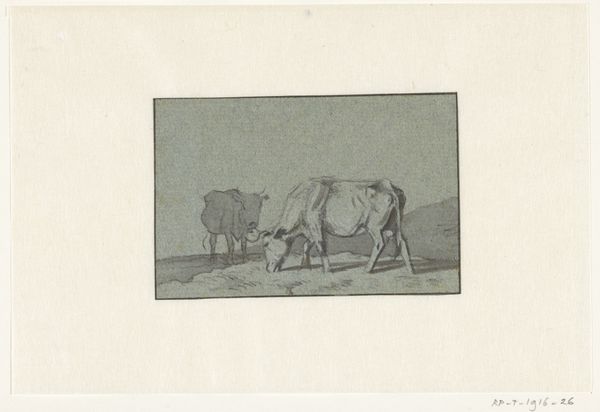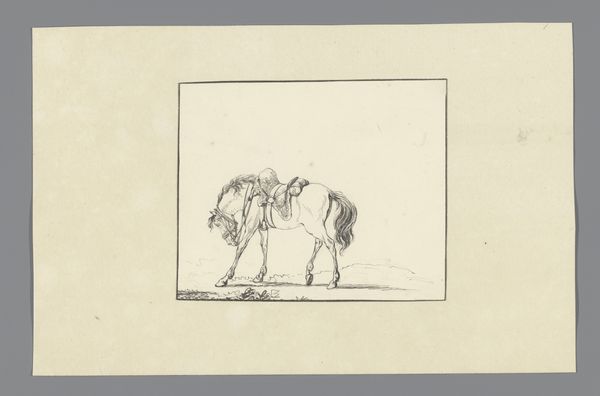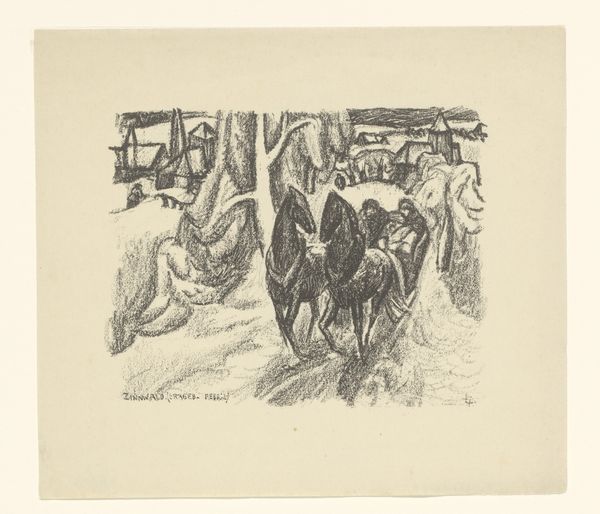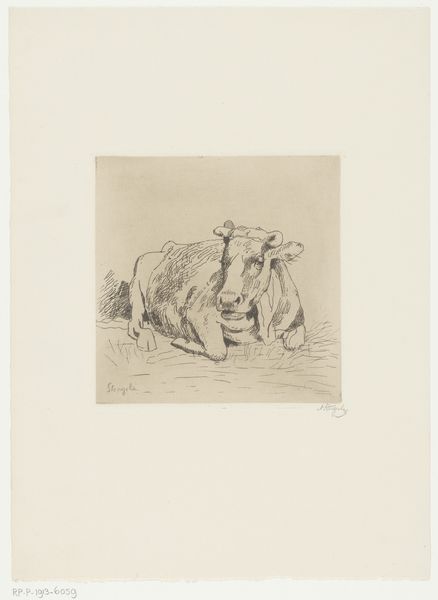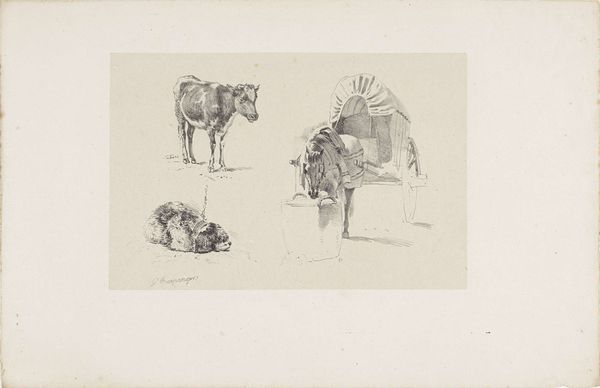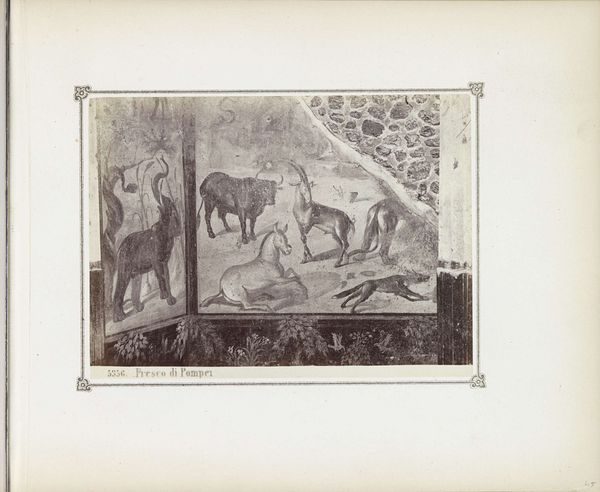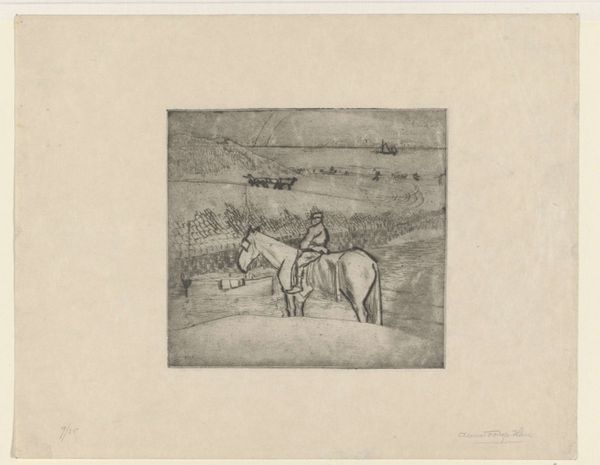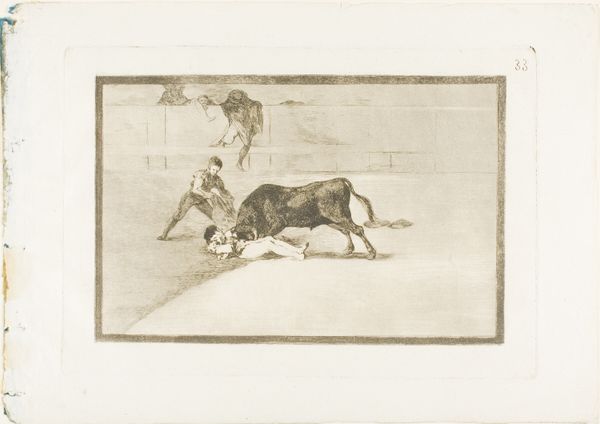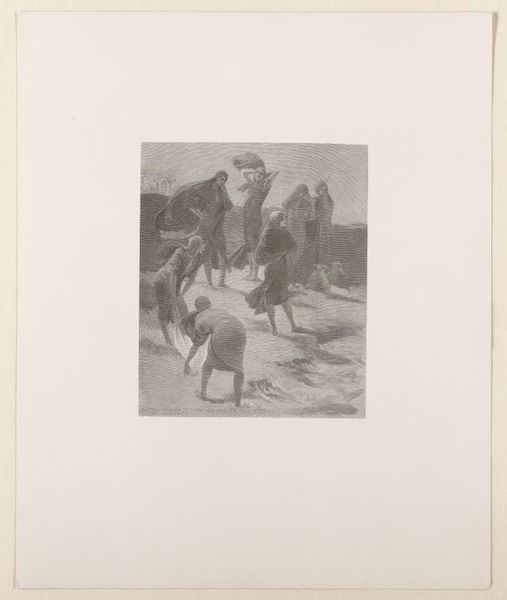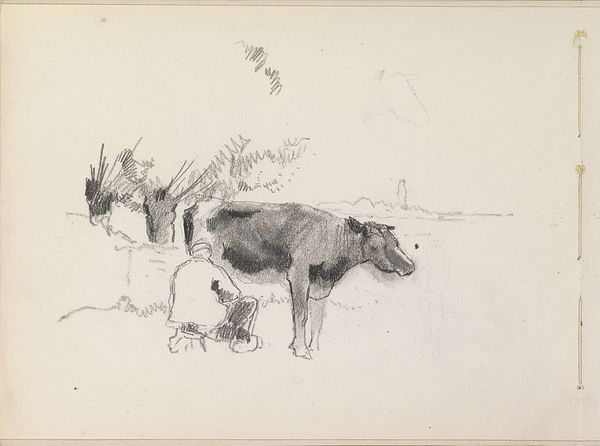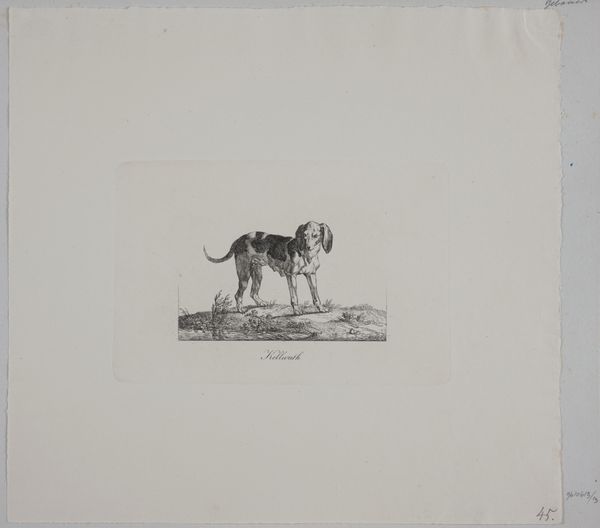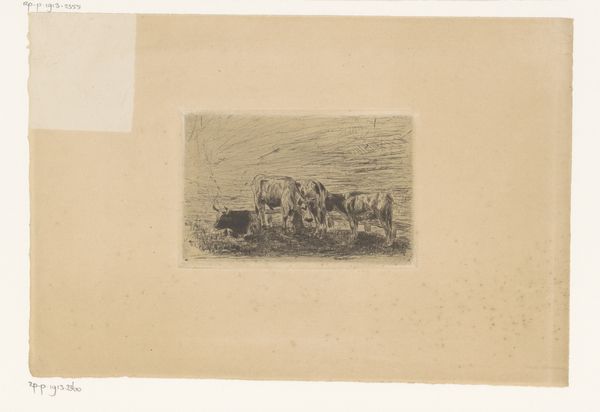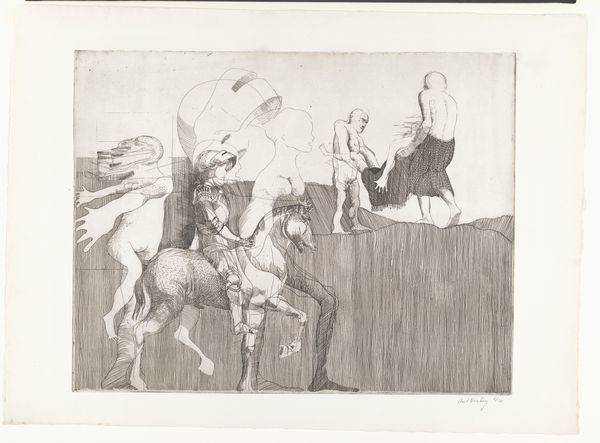
drawing, ink, pen
#
drawing
#
landscape
#
figuration
#
ink line art
#
ink
#
ink drawing experimentation
#
pen-ink sketch
#
line
#
sketchbook drawing
#
pen
#
genre-painting
Dimensions: height 108 mm, width 138 mm
Copyright: Rijks Museum: Open Domain
Editor: So, this drawing, “Twee jongens en een ezel” – "Two Boys and a Donkey" – by Julie de Graag, probably made between 1887 and 1924, is just ink on paper. It’s surprisingly stark, almost like a woodcut in its simplicity. What strikes you about the process in this drawing? Curator: It’s fascinating how de Graag reduces the scene to its bare essentials. The visible labor involved in creating this image - the stark black lines etched onto the white paper - reveals the mechanics of representation. It also hints at the work of those depicted, and asks about the purpose of the animal's labour. Is the image suggesting leisurely work or is it commenting on the boys' role and duties? Editor: That's a really interesting point. I hadn’t thought about the connection between the labor in the image and the labour of producing the artwork. The donkey seems kind of central to the composition here; but what are we meant to make of that animal's status in relation to the social standing of these young men? Curator: Indeed, the donkey’s centrality pushes us to consider the value of its labor, both within the image and within the society it reflects. What does it mean that de Graag focuses on this particular interaction, these specific modes of labor? How does the availability and use of these materials– paper, ink, a donkey– shape the possible representations? Editor: So you’re suggesting the availability of materials, both for the artist and the subjects in the artwork, plays a role in the meaning? Curator: Precisely. The starkness and relative scarcity of marks within this pen and ink drawing prompts us to interrogate both the material conditions that enabled the work's creation and the material circumstances structuring the lives depicted. The labour in this landscape asks a range of complex questions about how value is socially inscribed. Editor: I never would have looked at it that way. Now I see how much the technique and the materials contribute to understanding the whole picture, beyond just the figures themselves. Curator: Exactly, seeing art as a product of specific materials and historical processes opens up new avenues for interpretation.
Comments
No comments
Be the first to comment and join the conversation on the ultimate creative platform.
